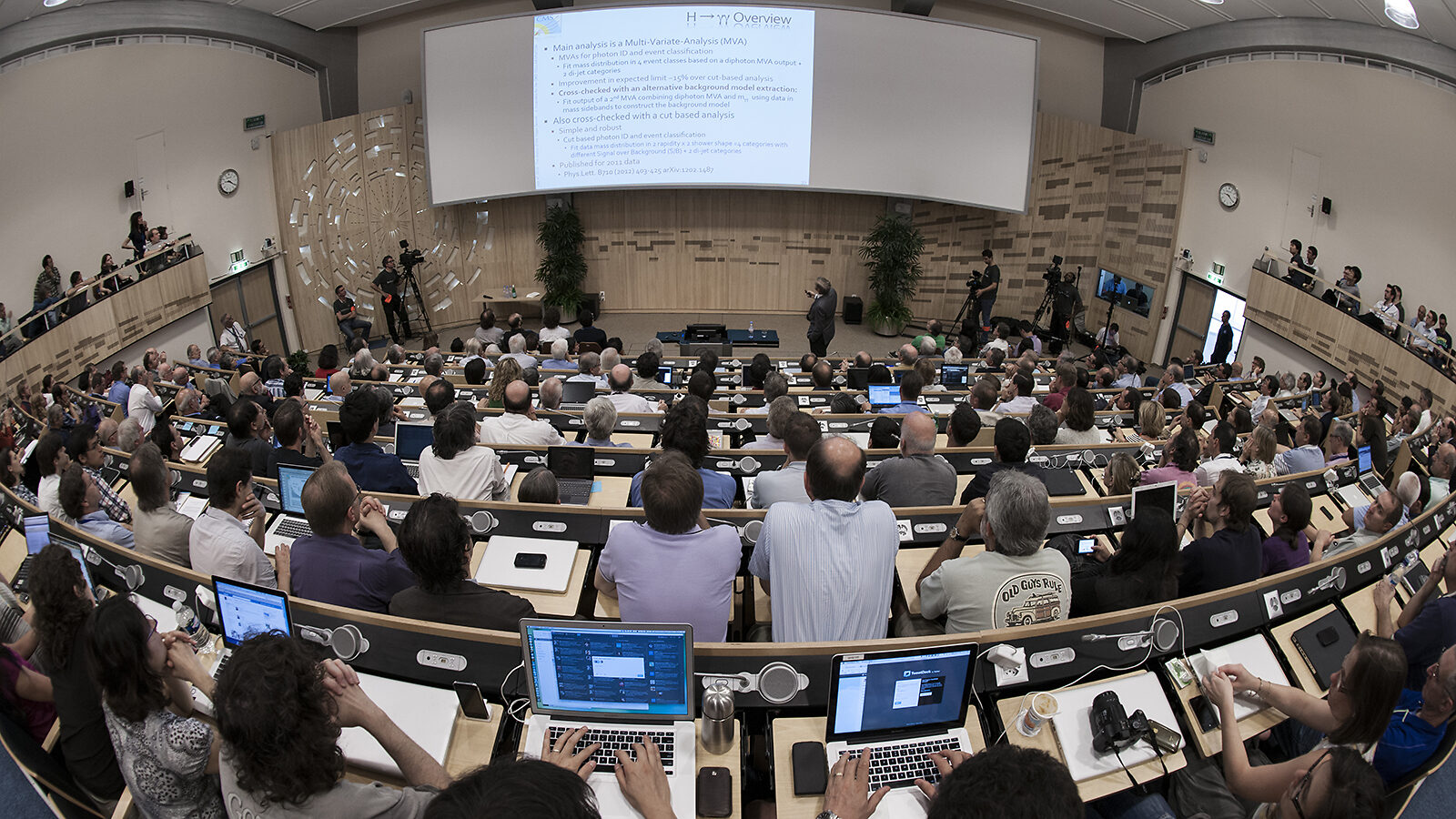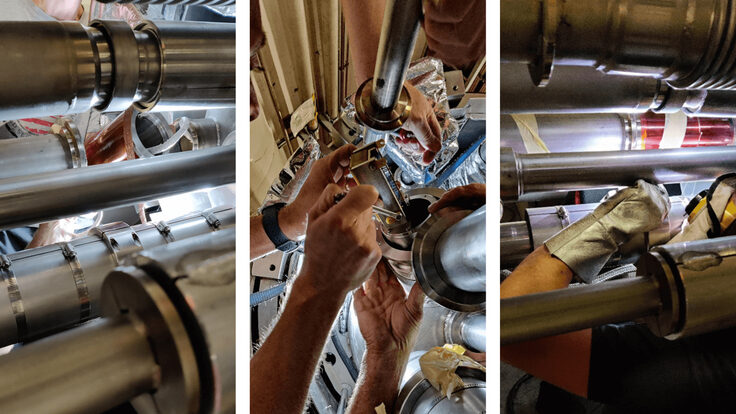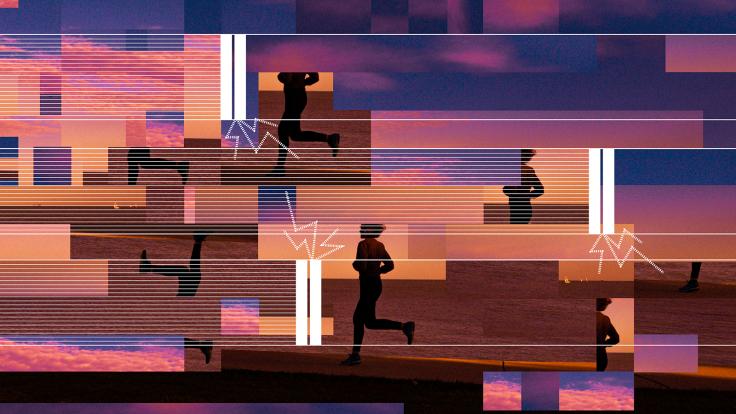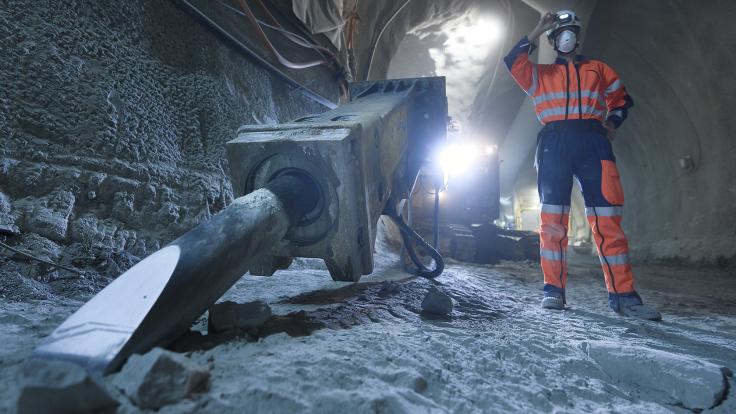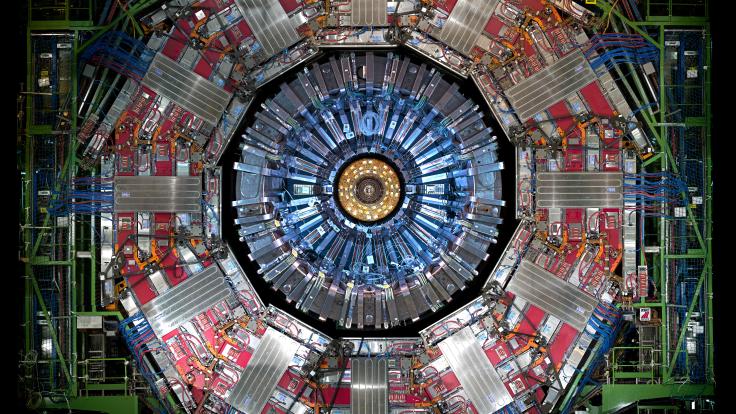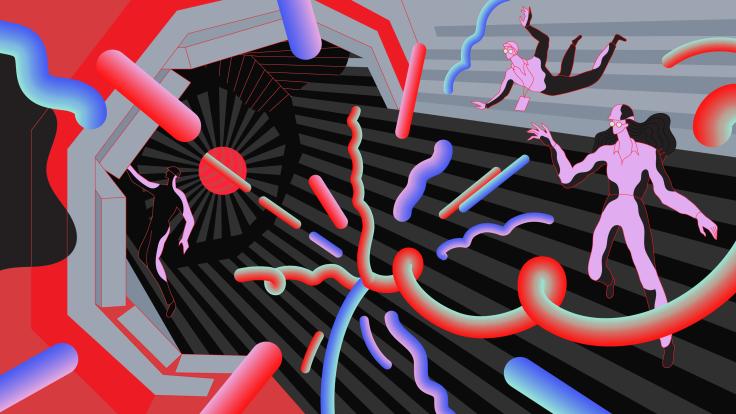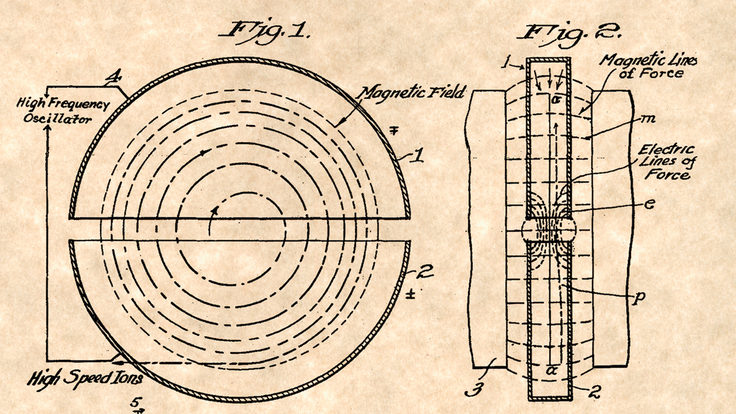Joe Incandela sat in a conference room at CERN and watched with his arms folded as his colleagues presented the latest results on the hunt for the Higgs boson. It was December 2011, and they had begun to see the very thing they were looking for—an unexplained bump emerging from the data.
“I was far from convinced,” says Incandela, a professor at the University of California, Santa Barbara and the former spokesperson of the CMS experiment at the Large Hadron Collider.
For decades, scientists had searched for the elusive Higgs boson: the holy grail of modern physics and the only piece of the robust and time-tested Standard Model that had yet to be found.
The construction of the LHC was motivated in large part by the absence of this fundamental component from our picture of the universe. Without it, physicists couldn’t explain the origin of mass or the divergent strengths of the fundamental forces.
“Without the Higgs boson, the Standard Model falls apart,” says Matthew McCullough, a theorist at CERN. “The Standard Model was fitting the experimental data so well that most of the theory community was convinced that something playing the role of Higgs boson would be discovered by the LHC.”
The Standard Model predicted the existence of the Higgs but did not predict what the particle’s mass would be. Over the years, scientists had searched for it across a wide range of possible masses. By 2011, there was only a tiny region left to search; everything else had been excluded by previous generations of experimentation. If the predicted Higgs boson were anywhere, it had to be there, right where the LHC scientists were looking.
But Incandela says he was skeptical about these preliminary results. He knew that the Higgs could manifest itself in many different forms, and this particular channel was extremely delicate.
“A tiny mistake or an unfortunate distribution of the background events could make it look like a new particle is emerging from the data when in reality, it’s nothing,” Incandela says.
A common mantra in science is that extraordinary claims require extraordinary evidence. The challenge isn’t just collecting the data and performing the analysis; it’s deciding if every part of the analysis is trustworthy. If the analysis is bulletproof, the next question is whether the evidence is substantial enough to claim a discovery. And if a discovery can be claimed, the final question is what, exactly, has been discovered? Scientists can have complete confidence in their results but remain uncertain about how to interpret them.
In physics, it’s easy to say what something is not but nearly impossible to say what it is. A single piece of corroborated, contradictory evidence can discredit an entire theory and destroy an organization’s credibility.
“We’ll never be able to definitively say if something is exactly what we think it is, because there’s always something we don’t know and cannot test or measure,” Incandela says. “There could always be a very subtle new property or characteristic found in a high-precision experiment that revolutionizes our understanding.”
With all of that in mind, Incandela and his team made a decision: From that point on, everyone would refine their scientific analyses using special data samples and a patch of fake data generated by computer simulations covering the interesting areas of their analyses. Then, when they were sure about their methodology and had enough data to make a significant observation, they would remove the patch and use their algorithms on all the real data in a process called unblinding.
“This is a nice way of providing an unbiased view of the data and helps us build confidence in any unexpected signals that may be appearing, particularly if the same unexpected signal is seen in different types of analyses,” Incandela says.
A few weeks before July 4, all the different analysis groups met with Incandela to present a first look at their unblinded results. This time the bump was very significant and showing up at the same mass in two independent channels.
“At that point, I knew we had something,” Incandela says. “That afternoon we presented the results to the rest of the collaboration. The next few weeks were among the most intense I have ever experienced.”
Meanwhile, the other general-purpose experiment at the LHC, ATLAS, was hot on the trail of the same mysterious bump.
Andrew Hard was a graduate student at The University of Wisconsin, Madison working on the ATLAS Higgs analysis with his PhD thesis advisor Sau Lan Wu.
“Originally, my plan had been to return home to Tennessee and visit my parents over the winter holidays,” Hard says. “Instead, I came to CERN every day for five months—even on Christmas. There were a few days when I didn't see anyone else at CERN. One time I thought some colleagues had come into the office, but it turned out to be two stray cats fighting in the corridor.”
Hard was responsible for writing the code that selected and calibrated the particles of light the ATLAS detector recorded during the LHC’s high-energy collisions. According to predictions from the Standard Model, the Higgs can transform into two of these particles when it decays, so scientists on both experiments knew that this project would be key to the discovery process.
“We all worked harder than we thought we could,” Hard says. “People collaborated well and everyone was excited about what would come next. All in all, it was the most exciting time in my career. I think the best qualities of the community came out during the discovery.”
At the end of June, Hard and his colleagues synthesized all of their work into a single analysis to see what it revealed. And there it was again—that same bump, this time surpassing the statistical threshold the particle physics community generally requires to claim a discovery.
“Soon everyone in the group started running into the office to see the number for the first time,” Hard says. “The Wisconsin group took a bunch of photos with the discovery plot.”
Hard had no idea whether CMS scientists were looking at the same thing. At this point, the experiments were keeping their latest results secret—with the exception of Incandela, Fabiola Gianotti (then ATLAS spokesperson) and a handful of CERN’s senior management, who regularly met to discuss their progress and results.
“I told the collaboration that the most important thing was for each experiment to work independently and not worry about what the other experiment was seeing,” Incandela says. “I did not tell anyone what I knew about ATLAS. It was not relevant to the tasks at hand.”
Still, rumors were circulating around theoretical physics groups both at CERN and abroad. Mccullough, then a postdoc at the Massachusetts Institute of Technology, was avidly following the progress of the two experiments.
“We had an update in December 2011 and then another one a few months later in March, so we knew that both experiments were seeing something,” he says. “When this big excess showed up in July 2012, we were all convinced that it was the guy responsible for curing the ails of the Standard Model, but not necessarily precisely that guy predicted by the Standard Model. It could have properties mostly consistent with the Higgs boson but still be not absolutely identical.”
The week before announcing what they’d found, Hard’s analysis group had daily meetings to discuss their results. He says they were excited but also nervous and stressed: Extraordinary claims require extraordinary confidence.
“One of our meetings lasted over 10 hours, not including the dinner break halfway through,” Hard says. “I remember getting in a heated exchange with a colleague who accused me of having a bug in my code.”
After both groups had independently and intensely scrutinized their Higgs-like bump through a series of checks, cross-checks and internal reviews, Incandela and Gianotti decided it was time to tell the world.
“Some people asked me if I was sure we should say something,” Incandela says. “I remember saying that this train has left the station. This is what we’ve been working for, and we need to stand behind our results.”
On July 4, 2012, Incandela and Gianotti stood before an expectant crowd and, one at a time, announced that decades of searching and generations of experiments had finally culminated in the discovery of a particle “compatible with the Higgs boson.”
Science journalists rejoiced and rushed to publish their stories. But was this new particle the long-awaited Higgs boson? Or not?
Discoveries in science rarely happen all at once; rather, they build slowly over time. And even when the evidence overwhelmingly points in a clear direction, scientists will rarely speak with superlatives or make definitive claims.
“There is always a risk of overlooking the details,” Incandela says, “and major revolutions in science are often born in the details.”
Immediately after the July 4 announcement, theorists from around the world issued a flurry of theoretical papers presenting alternative explanations and possible tests to see if this excess really was the Higgs boson predicted by the Standard Model or just something similar.
“A lot of theory papers explored exotic ideas,” McCullough says. “It’s all part of the exercise. These papers act as a straw man so that we can see just how well we understand the particle and what additional tests need to be run.”
For the next several months, scientists continued to examine the particle and its properties. The more data they collected and the more tests they ran, the more the discovery looked like the long-awaited Higgs boson. By March, both experiments had twice as much data and twice as much evidence.
“Amongst ourselves, we called it the Higgs,” Incandela says, “but to the public, we were more careful.”
It was increasingly difficult to keep qualifying their statements about it, though. “It was just getting too complicated,” Incandela says. “We didn’t want to always be in this position where we had to talk about this particle like we didn’t know what it was.”
On March 14, 2013—nine months and 10 days after the original announcement—CERN issued a press release quoting Incandela as saying, “to me, it is clear that we are dealing with a Higgs boson, though we still have a long way to go to know what kind of Higgs boson it is.”
To this day, scientists are open to the possibility that the Higgs they found is not exactly the Higgs they expected.
“We are definitely, 100 percent sure that this is a Standard-Model-like Higgs boson,” Incandela says. “But we’re hoping that there’s a chink in that armor somewhere. The Higgs is a sign post, and we’re hoping for a slight discrepancy which will point us in the direction of new physics.”



